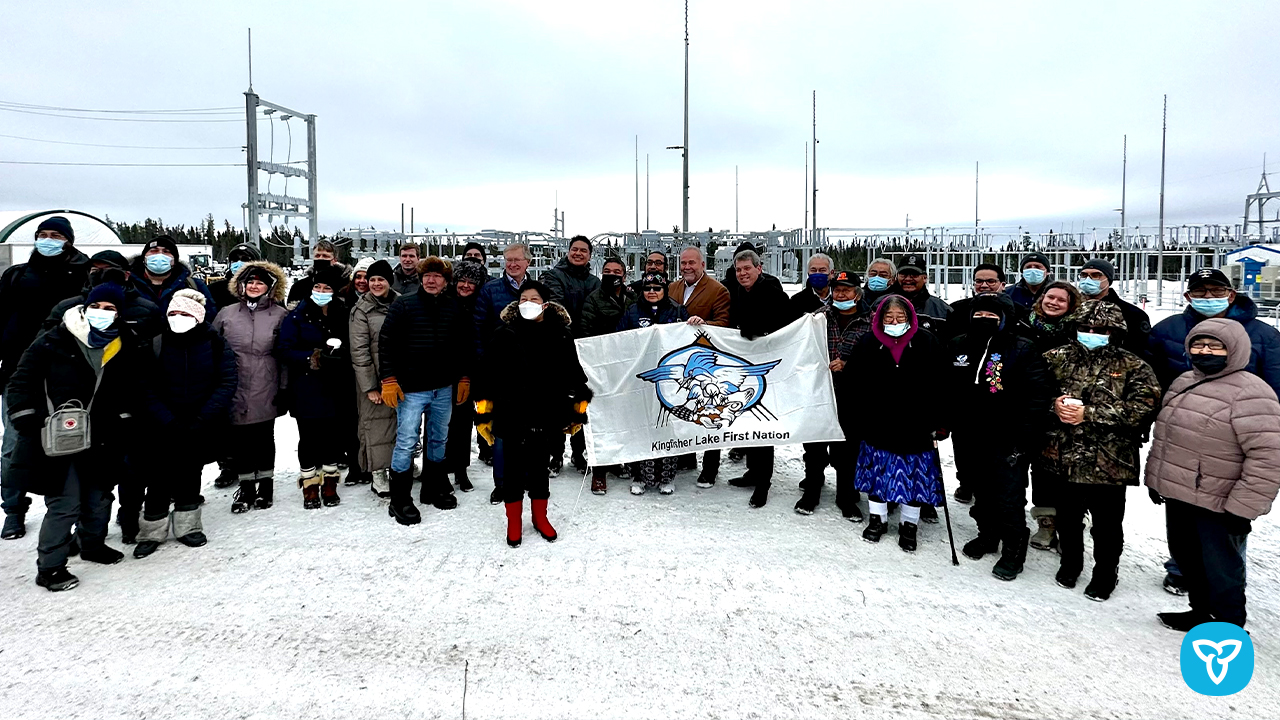Wataynikaneyap Power announced the energization of Kingfisher Lake First Nation, a remote northern Ontario community, which was connected to the provincial power grid on November 8, 2022. Upon grid connection and onto a reliable power source, the community turned off its diesel generators which had previously provided primary power to this remote community.
The Wataynikaneyap Power transmission system (No. 40 on ReNew’s 2022 Top100 Project report) connects the Kingfisher Lake community distribution system to the Ontario grid through a total of 250 km of line and two substations, originating from its Pickle Lake Substation. Kingfisher Lake will continue to be served by Hydro One Remotes Communities Inc. (HORCI) for the local distribution of electricity.
“Access to reliable energy will lead to many improvements for our people and the community. Schools, households, and businesses have been negatively impacted by frequent power outages. Improvements in healthcare, education, food security, and technology will no longer be constrained by the limited capacity of the diesel generators,” said Kingfisher Lake Chief Eddie Mamakwa.
Grid connection is necessary to power the future needs of the community, including a new subdivision and a new school opening in Fall 2023.
“It has taken many years and we have reached a significant milestone today. I am very excited that we are celebrating the connection of Kingfisher Lake First Nation,” said Margaret Kenequanash, CEO of Wataynikaneyap Power. “With a clear mandate from our Chiefs and support from our partners, connection to the provincial power grid brings reliable, clean energy to our communities through infrastructure majority-owned by 24 First Nations,” says Kenequanash.
The 1,800 km Wataynikaneyap Power Transmission Line will ultimately connect 17 remote First Nations to the Ontario power grid, removing their reliance on diesel-generated electricity. Wataynikaneyap Power, in partnership with Fortis Inc. and other private investors, are making the ‘line that brings light’, a $1.9 billion dollar infrastructure project, a reality for remote, northern Ontario First Nations.
“This is a huge accomplishment for the community, and all 24 First Nation majority owners in the Project,” said Frank Mckay, Board Chair for the Wataynikaneyap Power General Partnership (WPGP). “Miigwech to all our service providers and partners who supported our vision.”
“We join with all residents of Kingfisher Lake First Nation in celebrating their connection to the Ontario electrical grid,” said David Hutchens, president and Chief Executive Officer, Fortis Inc. “This is a great accomplishment that will help create opportunities for the community. We look forward to the continued progress of the Wataynikaneyap Project and the successful connection of all 17 First Nations to the grid.”
“The largest First Nations-led infrastructure project in Canada continues to advance north,” says Eliezar Mckay, First Nation LP Board Chair. “Congratulations to the team on this achievement and I look forward to seeing more communities connected in the near future.”
On November 23, Kingfisher Lake invited Wataynikaneyap Power, Opiikapawiin Services, government, and other stakeholders to celebrate this momentous occasion in the community.
Kingfisher Lake became the third First Nation connected to the provincial power grid through the Wataynikaneyap Power transmission line infrastructure project. Pikangikum First Nation was energized in December 2018 while North Caribou Lake First Nation connected to the power grid in October 2022.
Featured image: (Twitter – @ONenergy)










